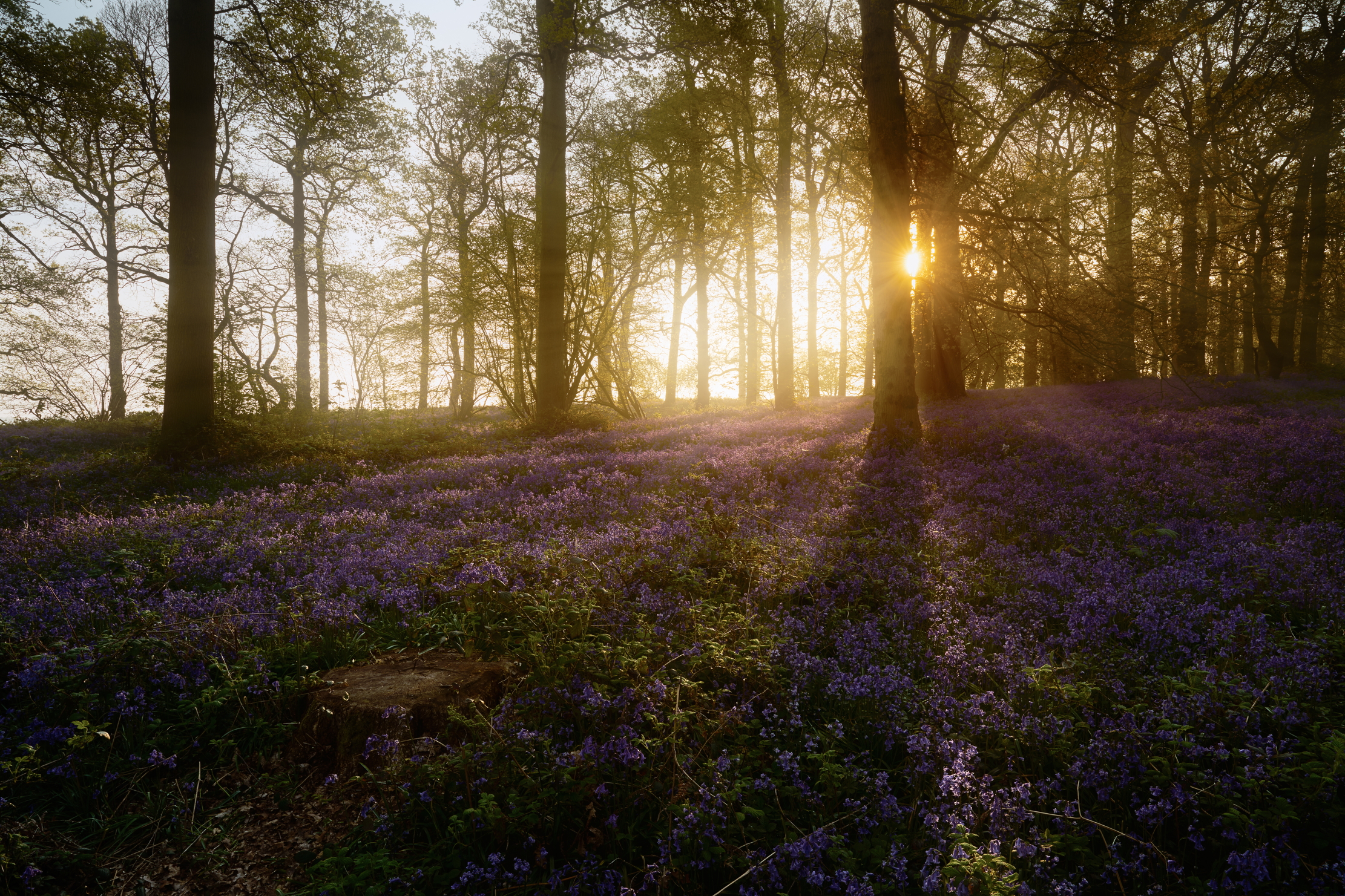Do not fear the Spanish invaders, the English bluebell will reign supreme
Our native spring flower, sprinkled across the woodland floor, is quite safe from foreign imposters.


I have been planting English bluebells. They grow in their millions in the beechwoods that surround us — but not in our own garden. They are, however, a protected species. The law is clear and uncompromising: ‘It is illegal to dig up bluebells or their bulbs from the wild, or to trade or sell wild bluebell bulbs and seeds.’ I have, therefore, had to buy them from a respectable bulb-merchant.
The irony is that our garden is swamped by the other sort — vulgar Spanish bluebells, now known as Hyacinthoides hispanica, in the same way that our own English species, which has seen many name changes over the centuries, is now known as Hyacinthoides non-scripta. Some botanists believe that the Spanish invader presents a national threat to our own native beauties. Their learned articles are reported in the tabloids with headlines that evoke the Spanish Armada.
The two species are not too difficult to tell apart. There are cleverer ways than mine to distinguish them, but I notice that the Spaniards flower a week or so earlier and have fatter leaves. Their stems are upright, whereas the flowers are slightly broader and paler. Plus they have a peppery smell. Our true-blue English bluebells have a nodding tip to the flower stems and that unique and gorgeous scent that Penhaligon extracted so perfectly in the days when I could afford to give it to my wife for our wedding anniversary. I am told that it is no less perfect today — the quintessence of the parfumier’s skill.
But do the two species hybridise? Yes. What happens if they do? Answer: the hybrids often have an ecological advantage known as hybrid vigour. Are we going to find that all our ravishing spring woodlands start to smell of pepper? Answer: No. But it’s a very complicated story, which is why it hits the headlines whenever a new scientific study reports evidence of a Spanish invasion.
Spanish bluebells are solitary bulbs that love the hard-baked limestone rocks of Andalusia. I’ve seen them in days when plant collecting was legal and utterly failed to prise them out of their natural choice of residence.
English bluebells are vigorous colonisers that opt for deciduous woodland where they can soak up our springtime sunshine and our abundant rain before the trees leaf up and shade them out for the rest of summer. The surprise is that our bluebells are not exclusively English — they are also native to Ireland and parts of Europe, including northern France and Spain itself, where the cool damp climate of Galicia and Cantabria suits them nicely.
As the natural distribution of the Spanish bluebell extends north through all Castille and into parts of Portugal, the two species actually meet in the wild. Yes, they hybridise. The question is — which species has the upper hand when their genes combine?
Exquisite houses, the beauty of Nature, and how to get the most from your life, straight to your inbox.
The latest study was published last year by the Royal Botanic Garden in Edinburgh and based on a genetic analysis of more than 500 bluebell samples from 56 populations around Britain, Spain and Portugal. Their first discovery was that the non-native bluebells collected in Britain are not pure Hyacinthoides hispanica, but a hybrid between it and the British species. It has a botanical name — H. x massartiana — and has been grown in our gardens for centuries, together with a gleaming white form and popular pink one. True H. hispanica is probably not present anywhere in Britain.
The charmless thug Hyacinthoides x massartiana does, indeed, cross with our native bluebells, but mainly in gardens and public parks. There is very little evidence of large-scale hybridisation or ‘introgression’ with our native woodlanders. English bluebells have two massive advantages over the immigrants: first, there are so many of them that an occasional dalliance with a Spaniard makes little difference to the overall gene pool; second, the two are not fully interfertile, meaning that they don’t cross with each other as easily as one might suppose, because our native bluebells prefer pollen from their own kith and kin. The Spanish hybrid H. x massartiana also prefers pollen from pure English bluebells, which means that its genetic presence diminishes all the time. In short, the old fear of extinction by hybridisation is groundless.
All this was a comforting thought as I wielded my trowel. Long may my newly planted English beauties be preserved from introgression.
Charles Quest-Ritson is the author of the RHS Encyclopedia of Roses and a regular contributor to Country Life.

Credit: Mirrorpix via Getty
The Anderson shelter: Good for gardening, good for storing wine, and great for hiding from bombs
Damp, dimly lit and cramped they may have been, yet Anderson shelters were lifesavers during the Second World War. Russell
Charles Quest-Ritson is a historian and writer about plants and gardens. His books include The English Garden: A Social History; Gardens of Europe; and Ninfa: The Most Romantic Garden in the World. He is a great enthusiast for roses — he wrote the RHS Encyclopedia of Roses jointly with his wife Brigid and spent five years writing his definitive Climbing Roses of the World (descriptions of 1,6oo varieties!). Food is another passion: he was the first Englishman to qualify as an olive oil taster in accordance with EU norms. He has lectured in five languages and in all six continents except Antarctica, where he missed his chance when his son-in-law was Governor of the Falkland Islands.
